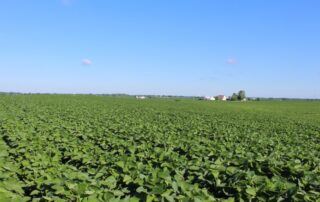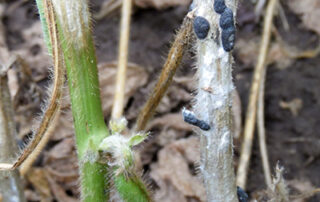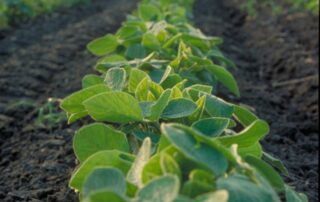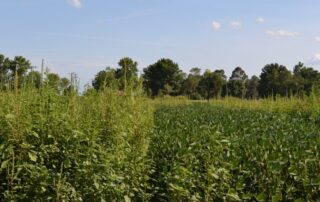Agronomy: Pay Attention to Sulfur
Sulfur (S) deficiencies are becoming more commonplace due to less deposits from the atmosphere and higher crop yields. I think it is time to add sulfur to the list of important nutrients so the Big 3 now becomes the Big 4: N, P, K and S. Of course the amounts required differ considerably, but all four are important in soybeans. Nutrient requirements for 50-bushel soybeans http://www.ipni.net/ppiweb/ppinews.nsf/0/2aa6a1b33813f7cb8525691c005bd1ae/$FILE/98105-NRU-Soybeans.pdf Sulfur is an important component in proteins that comprise metabolic enzymes in the plant and storage proteins in the seed. Sulfur is essential for plant protein formation. For a long time it was [...]
Disease Management: White Mold: How to Prepare for Wars on Spores
Strong soybean disease management, including timely scouting when flowers first appear (R1), will be critical for soybean farmers this growing season as they grapple with increasingly prevalent soybean white mold in the Midwest. Compared to previous years, white mold—or Sclerotinia Stem rot—was more common in 2015 and surfaced in many farm fields to some degree. Historically, soybean fields in Northern Illinois have been hardest hit by the destructive disease because that area has more of the cool, wet weather that promotes fungal growth than does the southern part of the state. Timing is everything when it comes to white [...]
Agronomy: WEBINAR, 4Rs Training: Performance Objectives
Bill Simmons, Ph.D., professor emeritus of soil and water management at the University of Illinois, reviews scenarios related to the 4Rs: right source, right rate, right timing and right place. This webinar is a great study tool for those who are taking the upcoming CCA Certification Exam. Key Takeaways: Remember the 4Rs: Right source: Applying the right chemical form of nutrients is key for maximal uptake and overall benefit to the plant. Right rate: Supplying crops with too little or too many nutrients at once can be detrimental to their success. Right timing: Make sure to apply at the [...]
Agronomy: Palmer amaranth could affect Illinois soybean yield
URBANA, Ill. – Although agricultural weed Palmer amaranth (Amaranthus palmeri) primarily impacts southern U.S. states, new research shows it could soon spread further north and damage soybean yields in Illinois. “We did a common garden study in southern, central, and northern Illinois to ask if different varieties of Palmer amaranth from the south complete their life cycle in all three locations and cause yield loss in soybean. The short answer is yes: there are no current climate limitations to any of the genotypes that we looked at,” said University of Illinois weed ecologist Adam Davis. “This is a serious [...]








 and then
and then